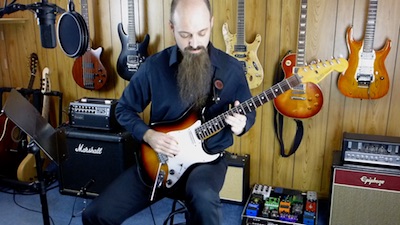Another Brick In The Wall Solo In Major: What Changes?


David Gilmour (Pink Floyd) has been an inspiration to many a player, and is personally one of my guitar heroes. If we ask ourselves why Gilmour's playing is so distinctive, you may well get it down to a few elements like:
- His carefully crafted tone
- That he plays slow and with restraint, letting the phrases breathe
- Great phrasing (bends, vibrato, etc), in fact 'Gilmour bends' are famous among guitar players!
- Great melodies. It helps having a good composer like Waters as bandmate ;-)
But what if I told you that there is another element to Gilmour's solo that is as important as the others but often overlook? It's the choice of harmony, i.e. what mode (major, minor, etc) Gilmour decides to play his solo in.
To prove it, I took the solo of Another Brick in the Wall, transposed it in major, and recorded it. As you will see in the video below, it's completely different.
To make a honest test - so we can compare apples to apples - I also recorded the solo in its original version, but using the same phrasing, tone, timing, etc. This way the only difference between the two version is just the mode used: one is in major, the other is in the original Dorian mode. You'll find this version too in the video.
Here is the result of this 'experiment', and a few details on how to do this yourself it you want to:
As you can hear, the major version sounds weird but not bad. It's just a different song! To my ear, the solo loses part of his haunting emotional impact. This shows how important is the choice of the mode when you write a solo!
Of course our little experiment above does not mean that the emotion of the solo is due ONLY to the mode: as usual to create emotion in music you need a combination of elements.
What the experiment demonstrates is that the choice of mode is important: it's a necessary element for the impact of the solo, but not a sufficient one.
To know more about modes and how to change modality to a song in both melody and harmony, check out my course Master of the Modes that will teach you this and much more!
Did you find this video helpful? Do not miss the next Music Theory videos!
Subscribe to the MusicTheoryForGuitar YouTube channel by clicking the button below.